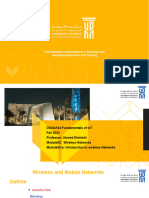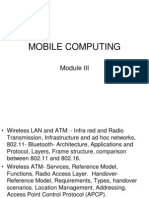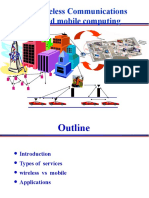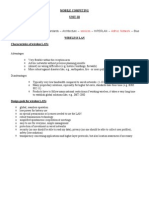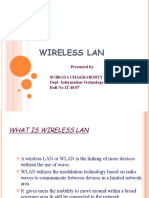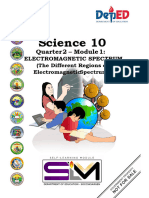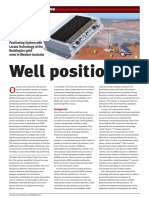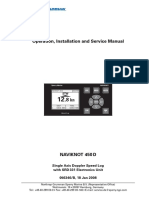0% found this document useful (0 votes)
5 views5 pagesMC Unit 3 ShortNotes
The document discusses mobile computing, focusing on various transmission methods such as infrared and radio, and their respective infrastructures and characteristics. It covers ad hoc networks, IEEE 802.11 (Wi-Fi) architecture, Bluetooth technology and its applications, as well as the concept of Wireless ATM and its services. Additionally, it introduces the Location Reference Model, which categorizes aspects of location information in wireless environments.
Uploaded by
Magesh BalaCopyright
© © All Rights Reserved
We take content rights seriously. If you suspect this is your content, claim it here.
Available Formats
Download as DOCX, PDF, TXT or read online on Scribd
0% found this document useful (0 votes)
5 views5 pagesMC Unit 3 ShortNotes
The document discusses mobile computing, focusing on various transmission methods such as infrared and radio, and their respective infrastructures and characteristics. It covers ad hoc networks, IEEE 802.11 (Wi-Fi) architecture, Bluetooth technology and its applications, as well as the concept of Wireless ATM and its services. Additionally, it introduces the Location Reference Model, which categorizes aspects of location information in wireless environments.
Uploaded by
Magesh BalaCopyright
© © All Rights Reserved
We take content rights seriously. If you suspect this is your content, claim it here.
Available Formats
Download as DOCX, PDF, TXT or read online on Scribd
/ 5



